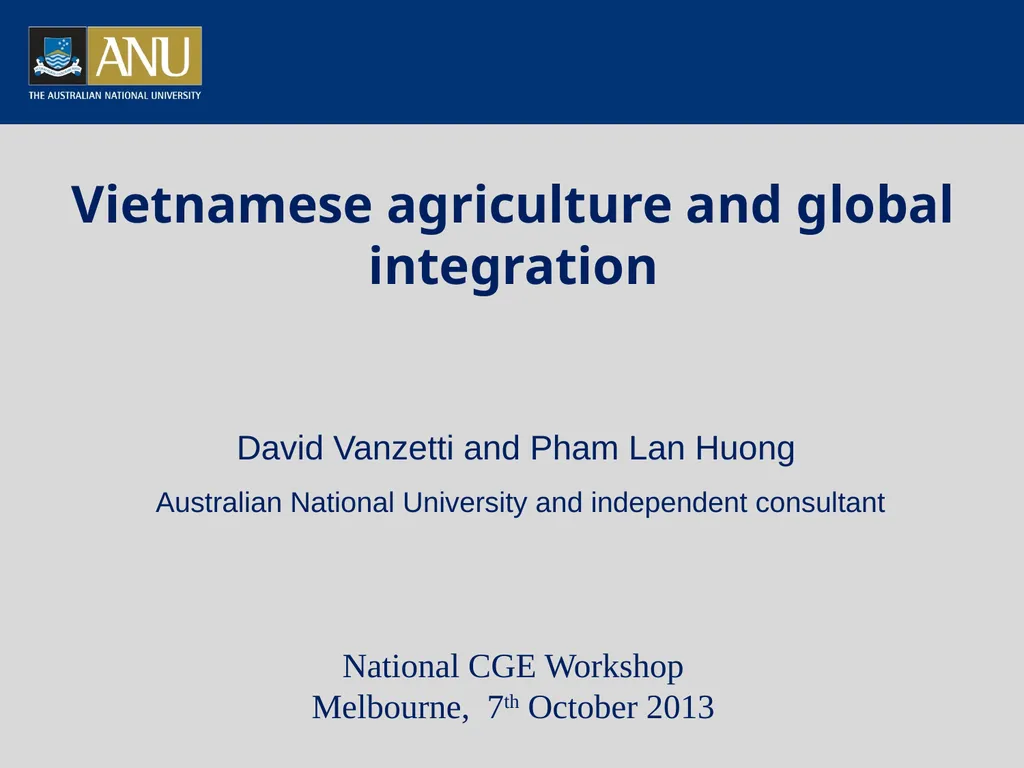
Vietnamese agriculture and global integration
Author: trish-goza | Published: 2025-05-24
Description: Vietnamese agriculture and global integration David Vanzetti and Pham Lan Huong Australian National University and independent consultant National CGE Workshop Melbourne, 7th October 2013 Integration and structural adjustment Vietnam is
Download Presentation
Download the PPT/PDF: Download
Transcript:
Loading transcript…